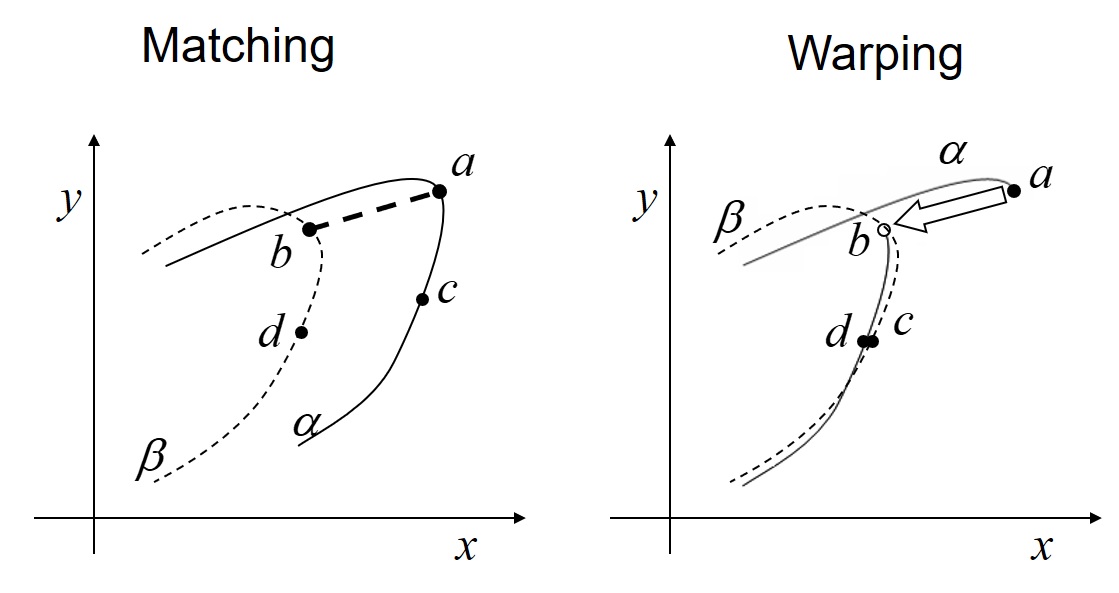
Calculating similarity of two time-series signal is not an easy issue. A naive way is directly comparing pointwise after sampling, but it often is not a good idea because it results in completely different results to human perception.

A typical human would match points in consideration of its shape and curvature. We may need algorithms working like a human being.

We proposed a novel algorithm for this issue, by extending DTW (dynamic time warping), named Dyamic Positional Warping (DPW). We also found that DPW outperforms in the recognition tasks of other problems such as EEG.
Paper lists
- Dynamic Time Warping for Online Handwriting, International Journal of Pattern Recognition and Artificial Intelligence (2009)
- Dynamic Position Warping for On-line 2D Shape, Proceedings of the 13th Conference of the International Graphonomics Society (2007)
- DPW Approach for Random Forgery Problem in Online Handwritten Signature Verification, Proceedings of 4th International Conference on Networked Computing and Advanced Information Management (2008)
- Enhanced Template Matching Using Dynamic Positional Warping for Identification of Specific Patterns in Electroencephalogram, Journal of Applied Mathematics (2014)
- Development of an electrooculogram-based eye-computer interface for communication of individuals with amyotrophic lateral sclerosis, Journal of NeuroEngineering and Rehabilitation (2017)
